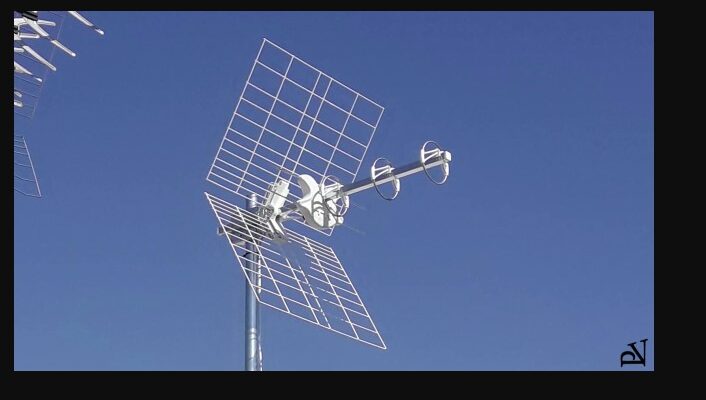Aerials play a vital role in our daily lives, whether we realize it or not. From ensuring we get the best TV reception to enabling wireless communication, aerials are everywhere.
But what exactly are they, and how do they work? This article will delve into the fascinating world of aerials, explaining their types, uses, and benefits in a way that’s easy to understand.
Contents
- 1 Introduction to Aerials
- 2 What is an Aerial?
- 3 Types of Aerials
- 4 How Aerials Work
- 5 Uses of Aerials
- 6 Choosing the Right Aerial
- 7 Installing an Aerial
- 8 Maintaining Your Aerial
- 9 Troubleshooting Common Issues
- 10 Aerials and Technology Advancements
- 11 Benefits of Using Aerials
- 12 Aerials in Different Industries
- 13 Future of Aerials
- 14 Conclusion
- 15 Frequently Asked Questions (FAQs)
Introduction to Aerials
Aerials, also known as antennas, are devices designed to transmit and receive electromagnetic waves.
Aerials are an essential part of communication systems, enabling the transmission of data over distances. From the TV in your living room to the smartphone in your hand, aerials allow devices to connect wirelessly.
This article will break down the various aspects of aerials, making the topic accessible and interesting.
What is an Aerial?
An aerial, or antenna, is a device used to transmit or receive electromagnetic waves. In simple terms, it’s like a bridge that allows your devices to communicate wirelessly. Aerials can be found in various forms and sizes, depending on their purpose. Whether it’s for broadcasting TV signals, enabling radio communication, or supporting mobile networks, aerials are indispensable in modern technology.
Types of Aerials
TV Aerials
These are designed to receive television signals. They come in different shapes and sizes, such as rooftop aerials, indoor aerials, and satellite dishes.
Radio Aerials
These aerials, used for AM and FM radio transmission, can be found in cars, homes, and radio stations.
Wi-Fi Aerials
These aerials are essential for wireless internet connections, found in routers and devices that require Wi-Fi access.
Mobile Phone Aerials
Built into smartphones and mobile towers, these aerials enable mobile communication.
GPS Aerials
These aerials receive signals from satellites to provide location and navigation services.
How Aerials Work
Aerials work by converting electrical signals into electromagnetic waves and vice versa. When transmitting, an aerial converts electrical signals from a device into radio waves, which travel through the air. When receiving, it captures radio waves and converts them back into electrical signals for the device to process.
Transmitting Signals
When it receives an electrical signal, an aerial emits electromagnetic waves. This is essential for broadcasting TV and radio signals and for wireless communication.
Receiving Signals
When an aerial receives electromagnetic waves, it converts them back into electrical signals that your device can understand, such as turning radio waves into sound or video signals for your TV.
Uses of Aerials
Broadcasting
Aerials are crucial for transmitting and receiving TV and radio signals, ensuring we can enjoy a wide range of entertainment and information.
Communication
From mobile phones to walkie-talkies, aerials enable wireless communication by transmitting and receiving signals.
GPS aerials help in navigation by receiving signals from satellites to determine location.
Internet Connectivity
Wi-Fi aerials provide wireless internet access, allowing us to connect to the web without cables.
Choosing the Right Aerial
Purpose
Identify the primary use of the aerial. Is it for TV reception, internet connectivity, or communication?
Location
Consider where the aerial will be placed. Outdoor aerials generally provide better reception but require proper installation.
Frequency Range
Ensure the aerial supports the frequency range needed for your specific application.
Gain
Higher-gain aerials can receive signals from a greater distance but may be more directional.
Installing an Aerial
Professional Installation
For the best results, especially with outdoor or rooftop aerials, professional installation is recommended.
DIY Installation
If you’re handy, you can install indoor aerials or simple outdoor ones yourself by following the manufacturer’s instructions.
Positioning
For optimal performance, place the aerial in a location with the fewest obstructions and the best line of sight to the signal source.
Maintaining Your Aerial
Regular Inspection
Check your aerial periodically for any physical damage or signs of wear and tear.
Cleaning
Keep your aerial clean, especially if it’s outdoors, to ensure it performs optimally.
Weatherproofing
Ensure outdoor aerials are weatherproof to withstand different weather conditions and avoid corrosion.
Troubleshooting Common Issues
Poor Signal Quality
If you’re experiencing poor signal quality, try repositioning the aerial or checking for any obstructions.
Interference
Identify and eliminate sources of interference, such as other electronic devices or physical barriers.
Connection Issues
Ensure all connections are secure and the cables are in good condition. Replace any damaged cables.
Aerials and Technology Advancements
Digital Aerials
With the shift from analog to digital, aerials have evolved to support high-definition broadcasts and better signal quality.
Smart Aerials
These aerials can automatically adjust to receive the best possible signal, improving reception and reducing the need for manual adjustments.
Compact Designs
Modern aerials are becoming smaller and more efficient, making them easier to install and integrate into various devices.
Benefits of Using Aerials
Enhanced Connectivity
Aerials provide reliable and efficient communication channels, whether it’s for TV, radio, or internet.
Improved Reception
High-quality aerials ensure you receive clear and uninterrupted signals, enhancing your overall experience.
Versatility
Aerials can be used for various applications, from entertainment to communication and navigation.
Aerials in Different Industries
Telecommunications
Aerials are fundamental in telecommunications, enabling mobile networks and wireless communication.
Broadcasting
TV and radio broadcasters rely on aerials to transmit their content to audiences.
Aviation
In aviation, aerials are used for communication, navigation, and radar systems.
Maritime
Ships and boats use aerials for communication and navigation, ensuring safety at sea.
Future of Aerials
5G Technology
With the advent of 5G, aerials are evolving to support higher data speeds and improved connectivity.
IoT Integration
Aerials will play a crucial role in the Internet of Things (IoT), enabling seamless communication between smart devices.
Sustainable Designs
Future aerials are likely to be more energy-efficient and made from sustainable materials to reduce environmental impact.
Conclusion
Aerials are indispensable in our modern world, supporting a wide range of applications from broadcasting and communication to navigation and internet connectivity.
Understanding the different types of aerials, how they work, and their benefits can help you make informed decisions about choosing and maintaining the right aerial for your needs.
As technology continues to advance, aerials will evolve to offer even better performance and more innovative solutions.
Frequently Asked Questions (FAQs)
1. What is the difference between an aerial and an antenna?
There is no difference; the terms “aerial” and “antenna” are used interchangeably to refer to devices that transmit and receive electromagnetic waves.
2. How do I choose the right aerial for my TV?
Consider factors such as the type of TV (analog or digital), your location, and the distance from the broadcast tower. Outdoor aerials generally provide better reception than indoor ones.
3. Can I install an aerial myself?
Yes, you can install an aerial yourself if you follow the manufacturer’s instructions and take necessary safety precautions. However, professional installation is recommended for the best results.
4. Why is my aerial not receiving a good signal?
Poor signal reception can be due to various factors, such as obstructions, interference, or the aerial being out of alignment. Try repositioning the aerial or checking for any sources of interference.
5. How often should I maintain my aerial?
Regular maintenance, including inspection and cleaning, should be done at least once a year or more frequently if the aerial is exposed to harsh weather conditions.
If you gained new insights from this article, explore our blog, Gimkit, for more enlightening content.



